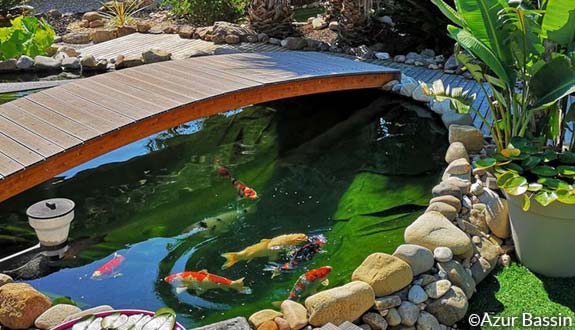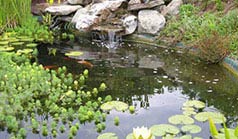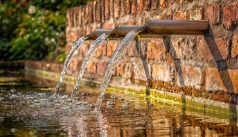

Our other guides (click on the thumbnail)
Overview
First of all, you have to know that the maintenance of a pond will depend a lot on its volume. Indeed, small volumes will require maintenance more often than large areas that are more stable.
The maintenance of a pond is also punctuated by the cycle of seasons. Indeed, this complex ecosystem will vary and change depending on the light and the temperature.
A well-maintained pond is best seen in the quality of its water: it is clean, clear and well oxygenated. The fish thrive and breed, the plants thrive and grow without becoming invasive and the algae keep a reasonable place.
The important parameters to maintain are:
Oxygenation of the pond (O2): a correct rate is between 8 and 12 mg /l. Always install a water jet, waterfall or fountain in your pond. You can also supplement with oxygenating plants, such as Elodea or water violets.
The rate of suspended solids (SS): the appearance of the water will indicate a high SS. The more it is opaque (or turbid), the more it is charged with particles in suspension.
The pH: it must be between 5 and 8 (ideally 7). If the pH is too low, the water is acidic: this indicates too much organic matter in the water (dirty filter, too many fish ...). If the pH is too high, the water is basic: this indicates poor oxygenation and poor mixing.
The hardness of the water: it must be between 6 and 10 °GH (to be adapted according to the needs of the fish).
To keep your water clean, regularly remove all floating waste on its surface: dead leaves, twigs, algae ... A UV lamp will help fight against bacteria and algae.
Every 5 years, a partial emptying of the pond can be useful. You will not change more than one-third of the water volume each year. Repeat this process 3 years in a row.
Filter cleaning
The filter is cleaned every month, once, in the spring and autumn, and more often in the summer because the filter is then much more solicited. You will rinse the filter in a bucket containing the pond water (do not use tap water) and take the opportunity to clean the different nozzles of your installation (fountain, water jets ...).
Cleaning an outdoor pond in the spring
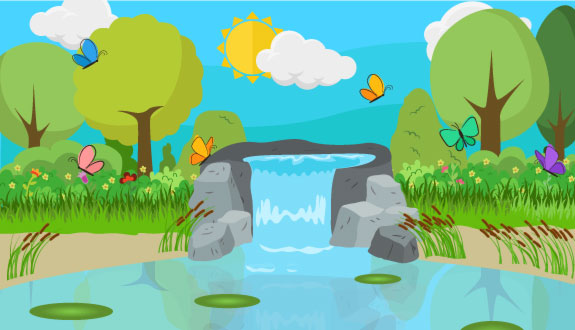
First thing to do: check the water tightness of your pond (the winter frost can indeed damage its walls in some cases).
At the end of the winter, your filter is normally at a standstill. As soon as the water temperature rises above 10 °C or 50 °F, you can restart the filter pump and check that everything is working properly. If necessary, replace the UV filter bulb.
Clean the surface and the bottom of the water with a dip net.
Vacuum 2/3 of the mud (removing it completely will risk unbalancing the ecosystem).
Check the health of your fish coming out of their hibernation and start feeding them again.
Check the water parameters and correct it if necessary.
It is also the time to prune your plants to promote their growth, and to plant the new ones (if any risk of freezing is past). Cut the stems faded 10 cm or 4 inches above the water (except for water lilies). Also check the baskets of the plants: add if there is a lack of substrate or change to larger baskets if the plant is cramped.
Finally, make the water level of the pond if it seems necessary.
Cleaning an outdoor pond in the summer
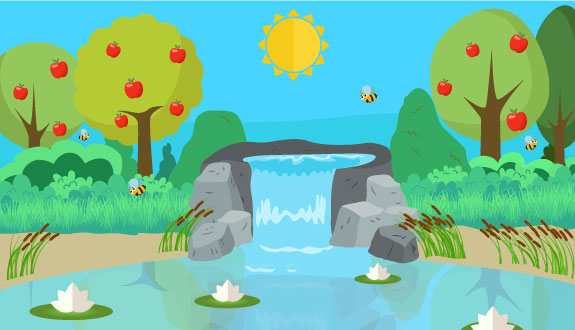
Do you have holidays and time during the warm weather? Good! Because your pelvis will explode with life! It will be beautiful and enchant you! But it will also ask for more work.
To begin, clean the filter more regularly: now is the time to perform this operation as soon as the need arises.
You will also need to monitor the oxygen level and pH once a week. Correct it if necessary
The plants will bloom during this period. You will have to pick up the dead leaves on the surface of the water, as well as the lenses of water which will swarm (leave enough plants so that the pond has shade with height of 1/3 of its surface). Also prune the plants when necessary.
Remove the algae as they appear.
Regularly remake the level of your pond because evaporation during the summer can be important.
If you go on vacation, the fish will live for around 15 days quietly. Beyond this time, it is better to ask someone you trust to come and feed them and maintain the pond.
Cleaning an outdoor pond in the the fall
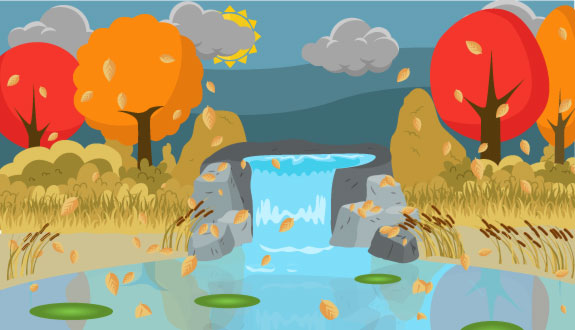
The fall can also be a time when the pond requires special attention, especially if it is below the trees.
The dead leaves will drop into the water. With their degradation, you will lose in quality of water and the SS will increase. It can also potentially lead to intoxication in the winter. In addition, the leaves will quickly block the pump and filter. To avoid this, you will have to collect fallen leaves in your pond very regularly. Tip: You can install a net over your pond in the fall. This prevents dead leaves from falling into the water and facilitates their recovery. The maintenance will then be greatly facilitated.
Your fish will need winter storage: feed them more regularly to prepare them for the cold. Tip: give them food always in the same place to avoid dirtying your entire pond.
At the imminent approach of the cold, clean one last time your filter, and make the level of the water.
As soon as the temperature of the water drops permanently below 10 °C or 50 °F, and your fish have stopped eating, you can cut the operation of the filter (and all systems such as jets, waterfalls, fountains, UV filters. ...). If the pond is more than one meter deep, you can leave the pump in place. Otherwise, it is preferable to get it out of the pond to prevent it from freezing. You can store it in a bucket of water free from freezing until spring. In any case, you will clean the filter thoroughly.
Cleaning an outdoor pool in the winter
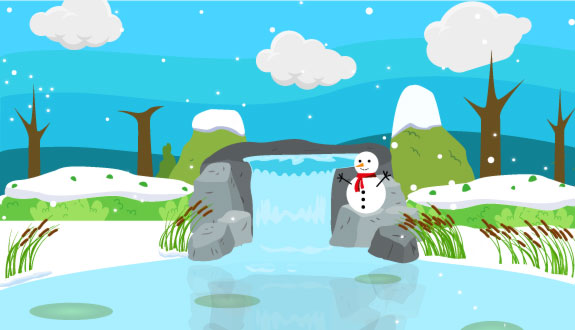
The activity of your pond will drop sharply: the plants will vegetate and the fish will slow down. It is a period of natural rest that must be respected.
If you have not already done so, stop the filter as soon as the water drops permanently below 10 °C or 50 °F and as soon as your fish stop eating.
Protect your plants from freezing, according to the recommendations related to their species (tarpaulin, mulching, interior ...).
Stop feeding your fish little by little.
Continue to collect floating debris from the surface of the water regularly and check the health of your fish.
It is helpful to let a log float in your pond for all the winter, so that freezing does not damage the walls of the pond. You can also install an anti-freeze bell, which does not deprive the fish of oxygen. Note that the presence of a bubbler prevents water from freezing.
If the ice has completely covered the pool, dig holes to ventilate it. Avoid breaking it with a hammer because your fish will suffer (it damages their auditory system and could even kill them). Carefully enlarge the hole with a stick and pour boiling water to melt part of the ice.
